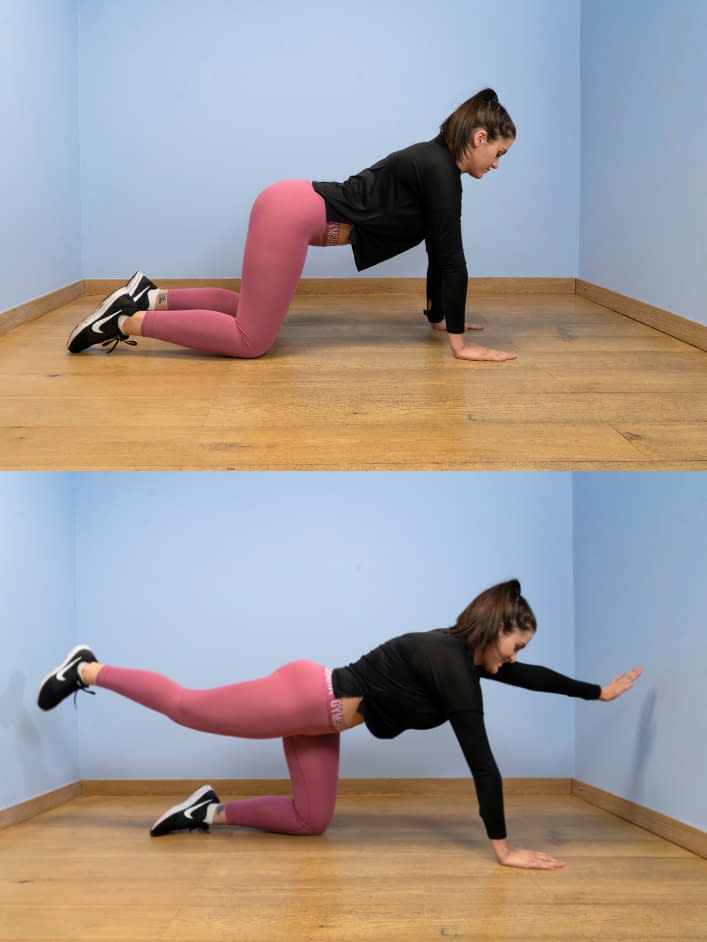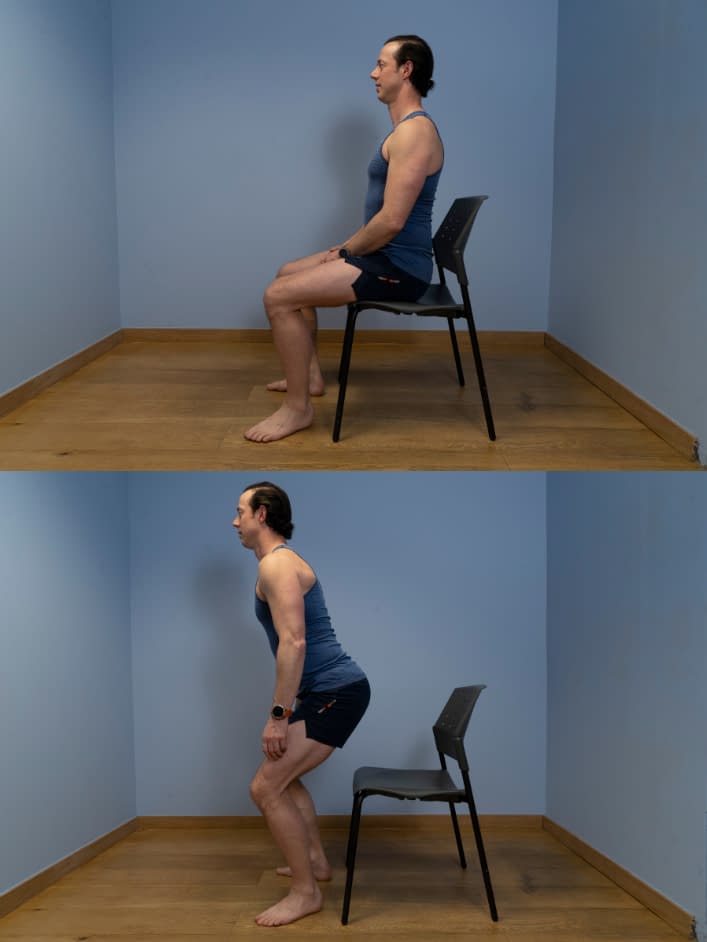Pelvic Girdle Pain Intermediate Exercise Programme
Aim to perform this programme a minimum of once per day unless prescribed otherwise. As with any new exercise, start slowly (repetitions as able) and build up as you are able within the guidelines below.
Pain should not exceed 3/10 whilst completing this exercise programme.
1. Child’s pose stretch
- Start in a kneeling position.
- From here, reach your hands out as far in front of you as possible on the floor with one hand on top of the other.
- Now sit slowly backwards onto your heels until you feel a stretch in your back.
- Note: If you cannot kneel then this exercise can also be done in standing with your hands in front of you on the kitchen table or worktop.
- Hold for 20 seconds relaxing into the position.
2. 4 point kneeling leg lift
- Start on your hands and knees.
- Make sure that your back is straight and that your hands are under your shoulders and knees under hips.
- From this position, lift one leg straight out behind you until level with the line of your spine (do not lift too high).
- Return back to the start position and repeat on the other leg.
3. Sit to stand
- Sit in a stable chair that is at a convenient height for you to rise from.
- Shuffle forward in the chair so that your feet are directly under your knees.
- In a controlled manner, initiate a standing motion by shifting your weight forward and pushing down through your feet.
- As you rise, transition to standing upright by pushing your hips forward.
- Then, slowly lower yourself back down towards the chair by pushing your hips backwards and controlling the movement using your thigh muscles.
- Gently touch your buttocks on the chair before repeating.
We recommend consulting a musculoskeletal physiotherapist to ensure exercises are best suited to your recovery. If you are carrying out an exercise regime without consulting a healthcare professional, you do so at your own risk. If you have any concerns whilst completing these exercises, please contact a healthcare professional.
More Plans
This programme focuses on moving the pelvis and lumbar spine (lower back), as well as beginning gentle strengthening of the abdominal and pelvic girdle muscles to help maintain stability. Some of these simple exercises can be performed little and often during the day to help relieve pain. This should not exceed any more than 3/10 on your perceived pain scale.
- 0
- 1
- 2
- 3
- 4
- 5
- 6
- 7
- 8
- 910
This programme challenges the pelvic joints and muscles by reintroducing some positions that may have been uncomfortable previously. Again, it may be helpful to continue with some of the exercises from the previous programmes, particularly if you found they gave you some relief. Aim to complete this programme once daily. This should not exceed any more than 3/10 on your perceived pain scale.
- 0
- 1
- 2
- 3
- 4
- 5
- 6
- 7
- 8
- 910


